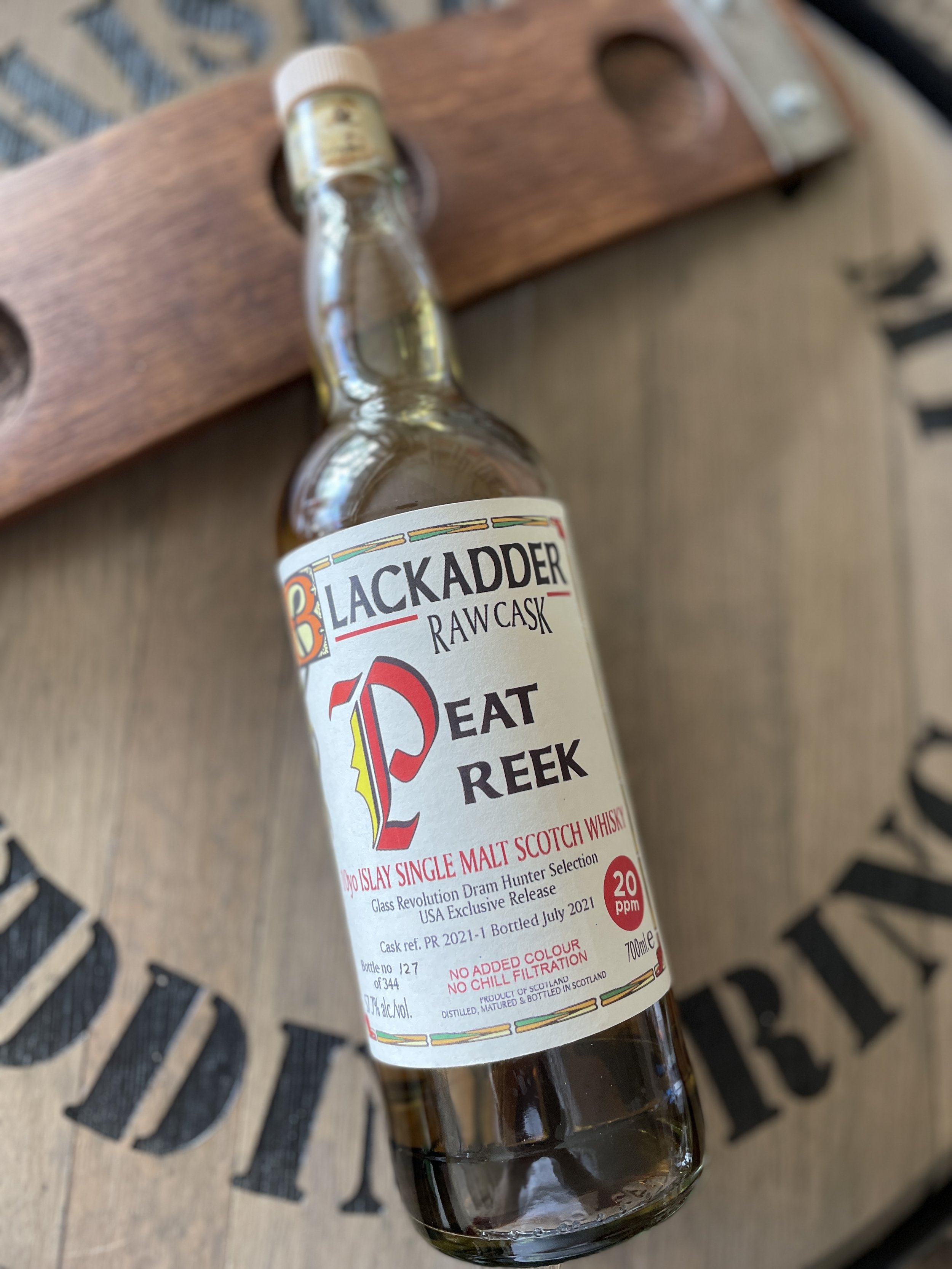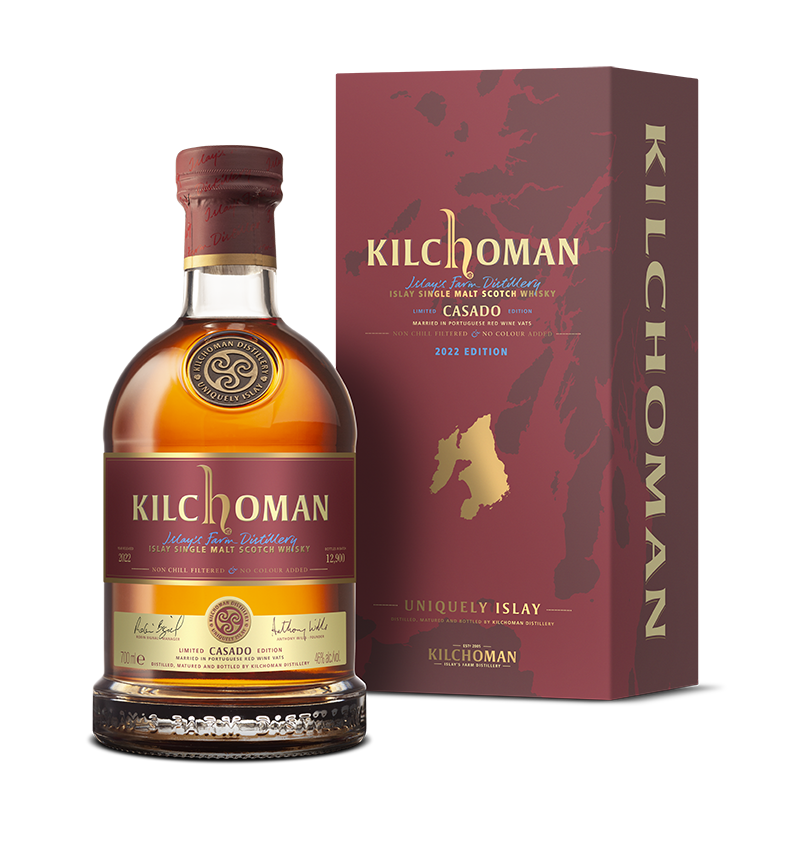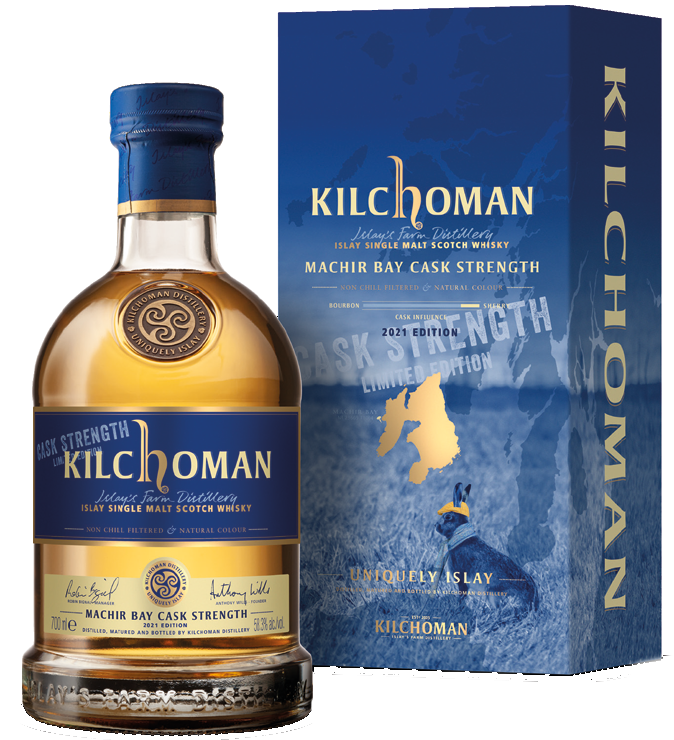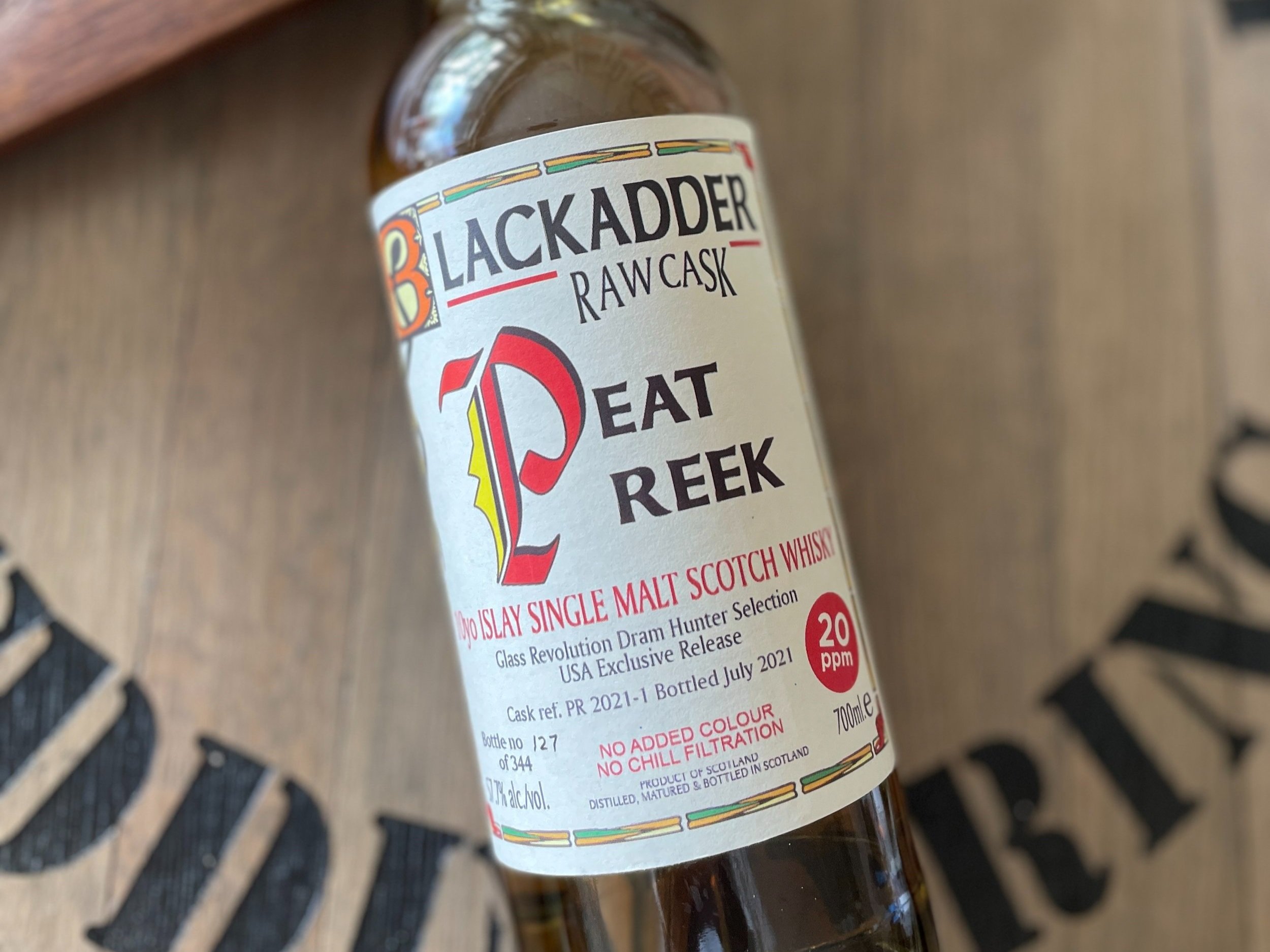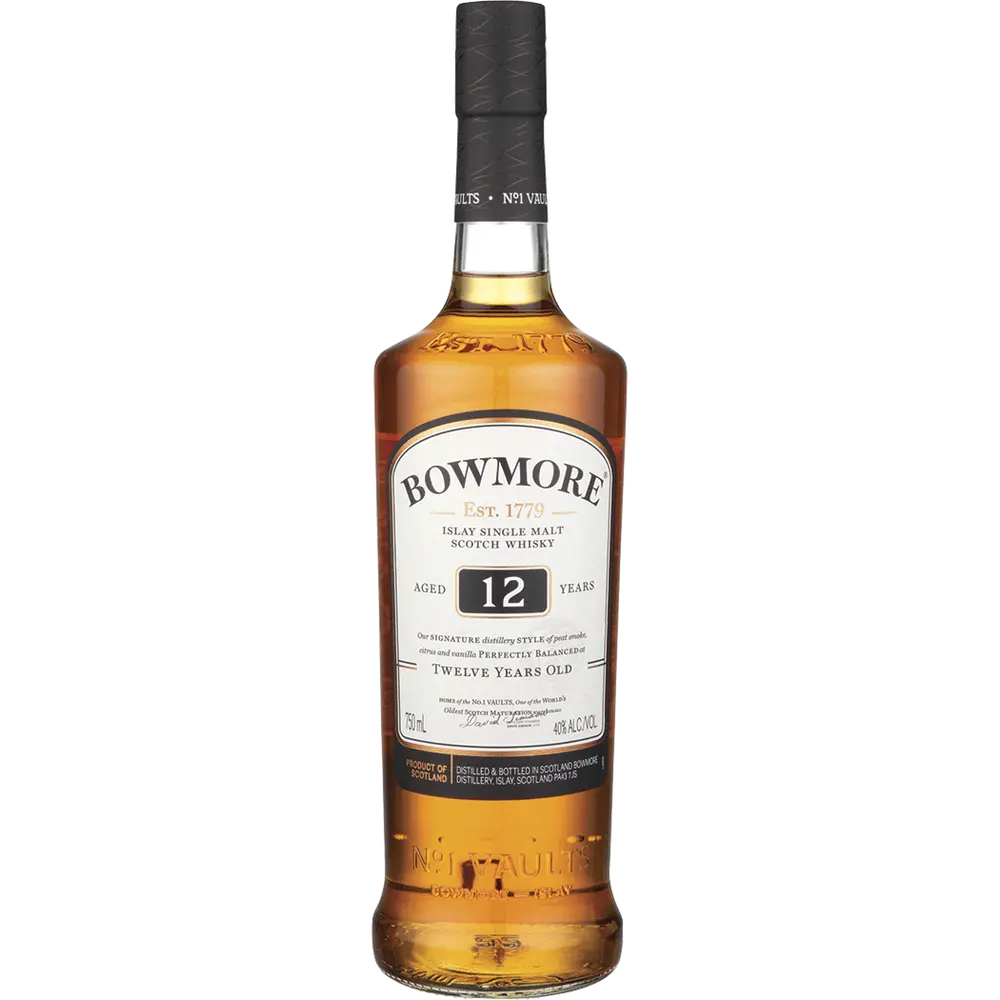Blackadder Peat Reek Islay Single Malt 10 Year Old Whisky
“Reek reek it rhymes with leek.”
Sorry - had to.
But really…don’t let “Peat Reek” scare you. Reek in this case literally means smell - you can see this on the back label, pictured below. Peat reek is the smell of burning peat, not an inherently bad smell (after all, who would want that on their label?)
Peat is a powerful flavor, one that is both divisive and incredibly varied. Peat is not one flavor; it is almost wholly dependent on the environment in which it lies and the vegetation and decomposition happening there. This particular bottle uses Islay peat, which can be vegetal, medicinal, ashy, burning, rubbery, earthy, saline, and smoky. To add another level, different Islay-based distilleries have different peat profiles that accentuate one or more of these flavors: for instance, I find Bowmore to be ashy, Laphroaig to be medicinal, Caol Ila to be fatty, and Kilchoman to be vegetal. And that’s just from a single island with about 3,000 inhabitants.
Peat is found all over the world, wherever the conditions are right. There’s peat in Scandinavia, Russia, India, Australia, the US, Canada, pretty much most temperate-to-cool latitudes around the globe. Every place has peat reflective of that place. Even in Scotland, Islay peat is different than inland Highland peat, which is different from Orkney/Orcadian peat, which is different from Island peat (Jura, Arran, Cambletown).
The varieties are as wide as you can imagine. So if you take one thing from this review - even if you never want to taste a bottle called “Peat Reek” - trust me that not all peat is the same, and chances are there is one out there that you’ll like.
The history of peat is a huge topic, and I won’t delve into it here other than to say that it originated as a fuel source. Peat is effectively early-stage coal, and burns well after being dried. If - like on Islay - there are no trees for firewood but plenty of peat bog, that becomes your fuel source.
People quickly discovered that peat had a strong scent, and it quickly became part of the Scottish whisky tradition. Malting barley is dried by the peat being burned, adding phenols and creosotes to the malt before it’s even milled and mashed. Phenols are the compound most associated with peat, to the point that “peatiness” is measured in phenol parts per million (PPM) even though there are more variables in place. Different peat behaves/expresses differently at the same PPM level.
Bruichladdich’s Octomore series claims to be the “most heavily peated” whisky in the world, and at 150-200+ PPM it’s hard to disagree. There are a few caveats to this. First, PPM is always measured pre-distillation because the levels will always be lower post-distillation (some of the phenols and creosotes will be removed by the copper contact and reflux). Phenols are alcohol-, water-, and oil-soluble, meaning every relevant molecule in a distillation can both carry phenols through to post-distillation and also carry them to the bottom of the still to be discarded.
Phenols as a compound are also highly variable - phenols and creosotes from Orkney, Islay, Highland, and Island will all react and behave differently despite being within the same country. A Highland Park (Orkney) at 40 PPM will taste much less peaty than a typical Islay at the same level because the former is almost entirely heather peat, a brush plant that grows in windswept areas. The resulting peat is gentler and more woodsmoke-forward than any of the adjectives I threw out for Islay.
Does that mean that Octomore is lying? Of course not. Measured by PPM, it is the most heavily peated whisky in the world. But - and it’s a big but - PPM is clearly a sliding scale.
I plan to do a peat-focused series of events, so follow on Eventbrite and the Whiskey Ringers Facebook Group to make sure you don’t miss them.
Closing out this bottle: Blackadder, the independent bottler producing this, is one of the more exclusive independent bottlers out there. They are hyper-focused on the cask, saying “Cask is King.” So much of the flavor in whisky comes from the cask that their passion is understandable. Their Raw Cask series is minimally filtered, so much so that its hallmark is finding barrel char in the bottom of the bottle.
This barrel was chosen from an Islay distillery’s stocks, meaning it is an independent bottling that reflects the character of that distillery (this is in contrast to independent bottlers who sometimes contract distill - that would be an Islay whisky geographically but wouldn’t reflect any particular distillery’s style). The PPM - 20 - is right on the front label, showing this is not a shy peat. I’m not familiar enough to know which distillery it is, but it’s definitely vegetal, ashy, not too medicinal. Probably not the right choice for your first peated dram, but a damn good one if peat is your friend.
Thank you to Glass Rev Imports for providing this sample with no constraints.
Blackadder Peat Reek Islay Single Malt 10 Year Old Whisky: Specs
Classification: Islay Single Malt Whisky
Origin: Undisclosed Islay Distillery
Mashbill: 100% Malted Barley
Proof: 115.4 (57.7% ABV)
Age: 10 Years Old
Cask: PR 2021-1, Bottle 127/344
Location: Scotland
Blackadder Peat Reek Islay Single Malt 10 Year Old Whisky Price: N/A - Only Available to Dram Hunters Club Members
Blackadder Peat Reek Islay Single Malt 10 Year Old Whisky Review: Tasting Notes
Eye: Golden hay with a slight green hue.
Nose: The peat isn’t subtle, that’s for sure…but it’s also not overpowering. This has yuzu and candied lemon peel with black truffle. Earthy, but not dirty. Fresh cut grass near brackish water.
Palate: Ashy at first, with pepper and vegetation growing quickly. Warming on the palate, the tingle spreads from the tip of my tongue to my throat over the course of seconds. Smoky, dark chocolate and coffee grounds. Roasted peppers charring on an open fire. Mouthfeel is spicy and light, bright and lemony. Pepper heat ramps up again after a brief pause.
Finish: Warm tingle keeps coming in waves. Dark chocolate truffles and earthy black truffles too, savory and sweet on a medium-to-long finish.
Overall: Less peaty than anticipated, spreading it over the entire experience. Savory and sweet, the peat earthy but also bright and lemony.
Final Rating: 6.8
10 | Insurpassable | Nothing Else Comes Close
9 | Incredible | Extraordinary
8 | Excellent | Exceptional
7 | Great | Well above average
6 | Very Good | Better than average
5 | Good | Good, solid, ordinary
4 | Has promise but needs work
1-3 | Let’s have a conversation

